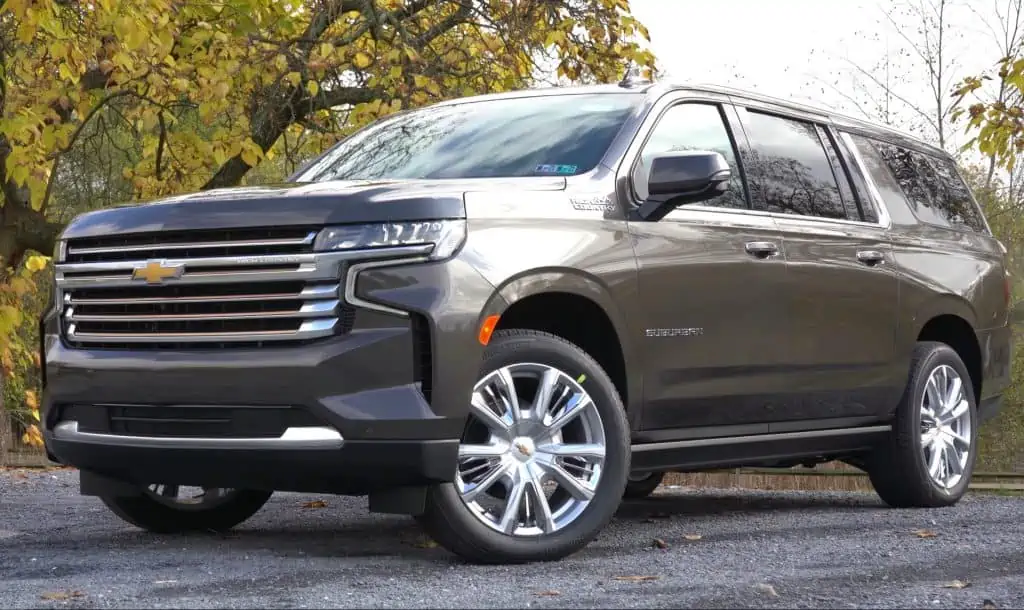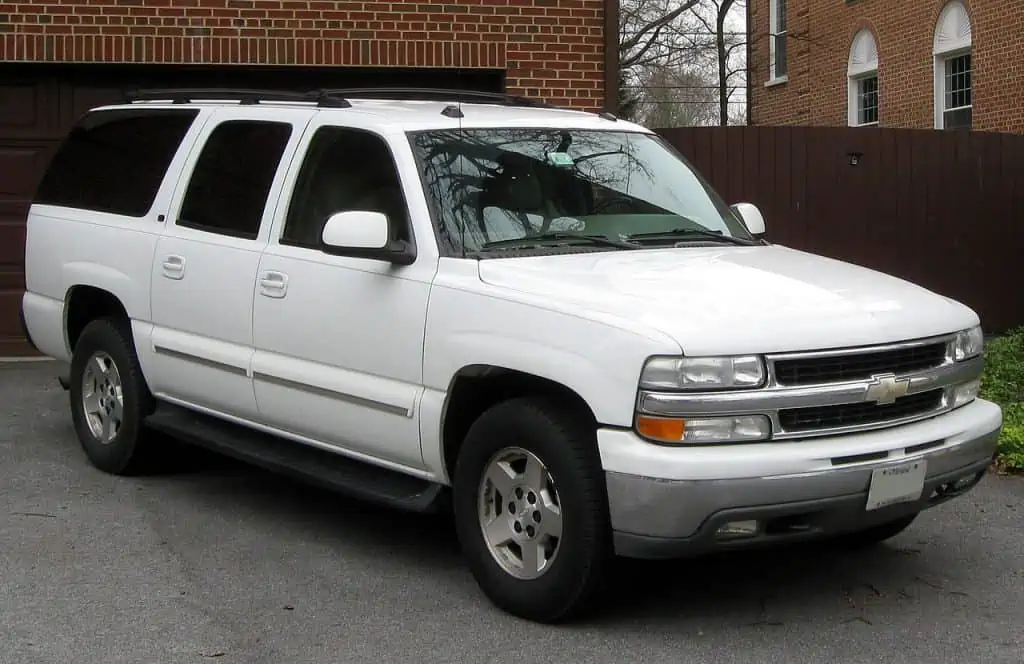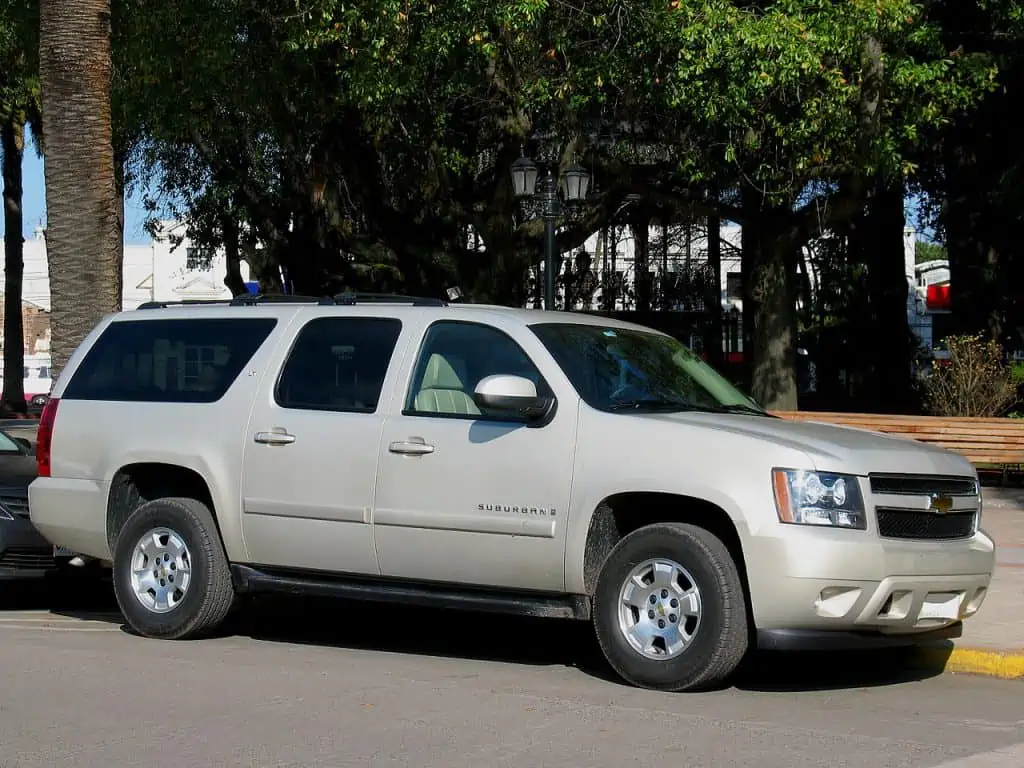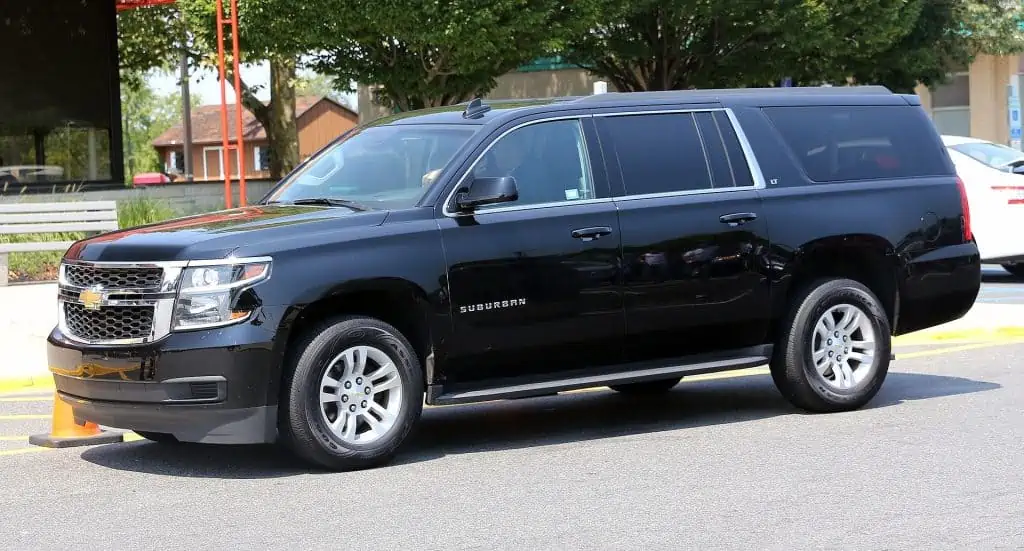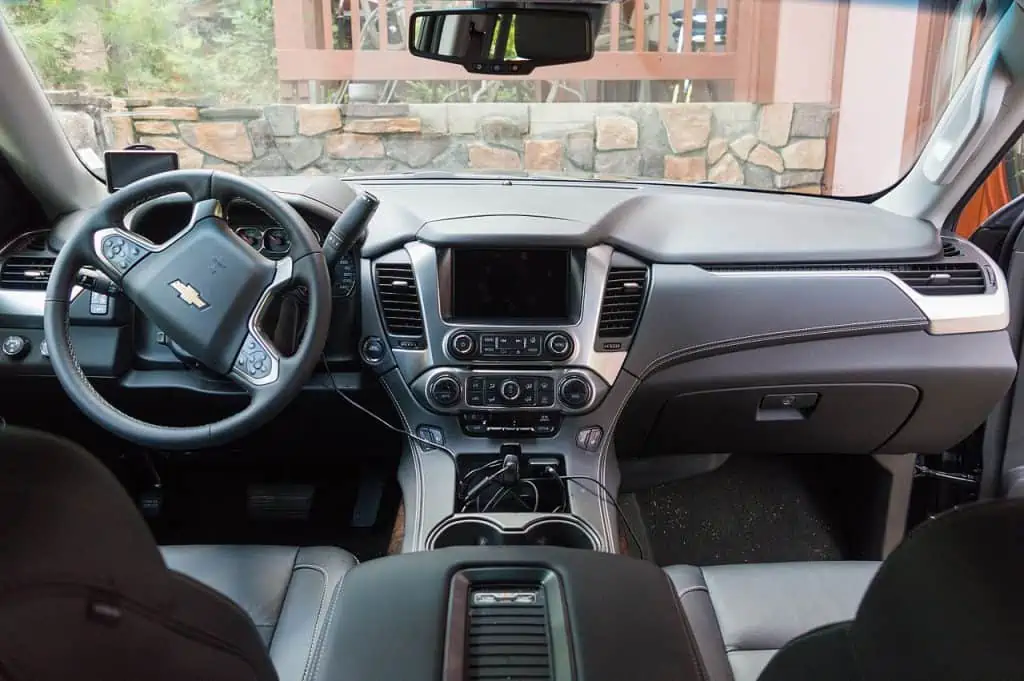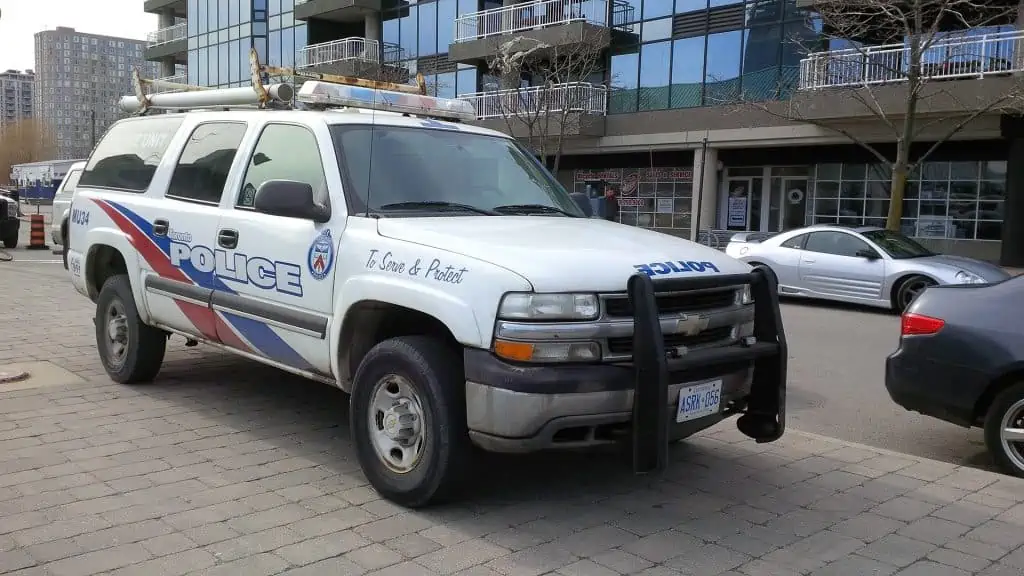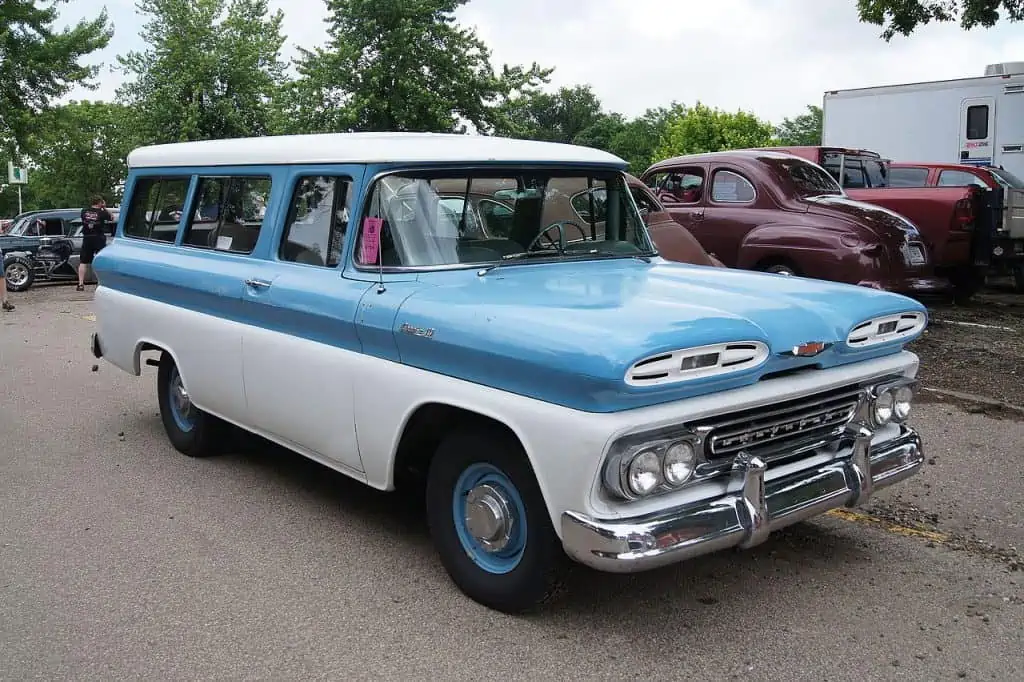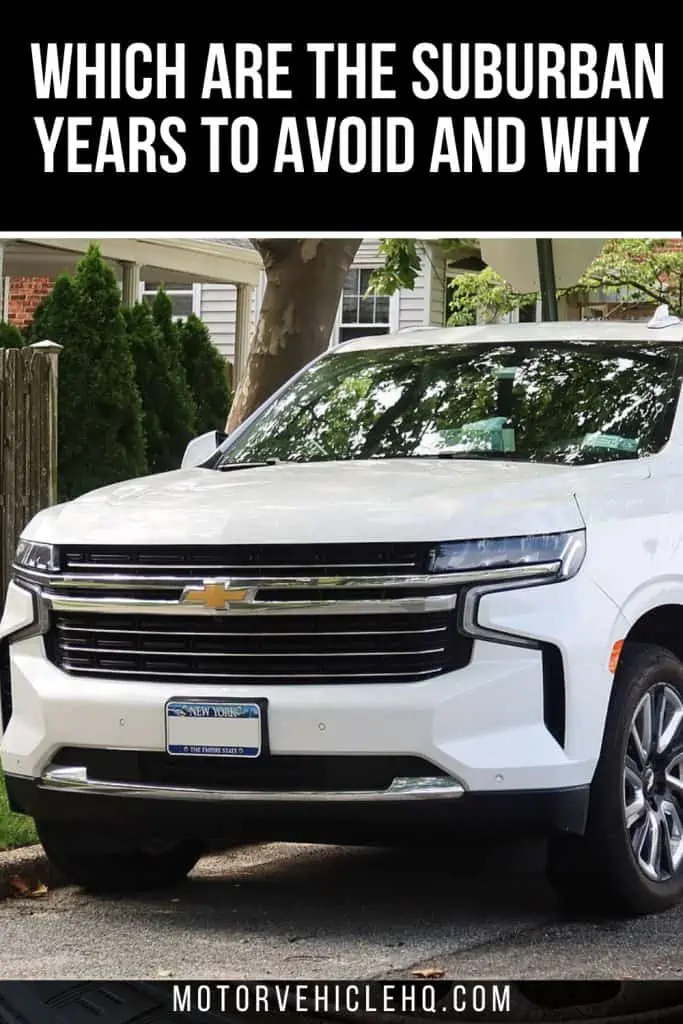The Suburban is one of the most well-known names in the SUV industry for good reason; it has won awards like being named the vehicle driving the most frequently each year and even receiving a star on the Hollywood Walk of Fame.
The Suburban is a continual evolution of the convertible cars made by General Motor’s Chevrolet brand.
This vehicle has won recognition for being the Chevy division’s most financially successful vehicle. According to a 2018 study, the Suburban is the most frequently driven car, and in 2019 it was ranked as the second most durable vehicle.
The 5.3-liter V8, 6.2-liter V8, and 3.0-liter diesel turbo engines are three potent engine options for the Suburban, which is built with a full-size SUV body.
The Suburban has undergone constant development and improvement by automotive engineers to ensure that it functions and maintains its class, but like any car, it is prone to issues that do not degrade this machine.
This full-size SUV has been in production since 1935, making it one of the oldest car models ever. It can be difficult to navigate the Suburban line’s latter decades, but you’re in luck! CoPilot will guide you through the best and worst Suburban year models to assist you at every turn.
Avoid buying 1999, 2001 to 2005, 2007, 2008 to 2009, 2014 to 2015, or 2016 model Suburban. There are many reasons why you shouldn’t buy these Suburban year models, the most concerning of which include total engine and transmission failure, excessive oil consumption, and damaged speedometers.
All models from 2007 and 2009 are unworthy of purchase, so you should avoid them at all costs. Avoid these Suburban year models if you want an SUV that is easy to drive.
Which are the Suburban Years to Avoid?
An SUV as dependable as the Suburban ought to make the driver feel secure and at ease while operating it. While the majority of year models will give you this without a doubt, the Suburban line has had a few rocky years that may not completely satisfy you. The following Suburban model years are not advised.
A 2021 Chevrolet Suburban by Andra Febrian / CC BY-SA 4.0. The 2021 Suburban has greater space than the preceding Suburban models for passengers and baggage.
- 1999
- 2001 – 2005
- 2007
- 2008
- 2009
- 2014
- 2015
- 2016
The model from 2007 is the worst you can buy because it has the most complaints and is the most expensive, with transmission and engine failure costing nearly $3,000 and $6,000, respectively. 2009 is not far behind, and at about 50,000 miles, it has the potential to be very expensive. In this model, excessive oil use could cost you $5,000.
The 1999 Suburban doesn’t require a lot of maintenance, but it might need repairs after 100,000 miles. Reports of total transmission failure with late-life repair costs of around $2,500 per model from 2001 to 2005 have been made, with various other issues like fuel pump failure and corroded brake lines rounding out the list.
If you purchase a 2008 Suburban, you might end up paying too much money to fix a long list of engine problems. The most problematic repair bill is over $4,000 for a sudden loss of oil pressure.
The number of complaints about 2014 models is relatively low, but they all appeared almost immediately, with problematic brake and engine defects appearing after only 10,000 miles. 2015 Suburbans are a hassle to deal with because of numerous complaints that the brakes and air conditioning stop working after about 55,000 miles.
There aren’t many complaints about the 2016 model, but the ones that do exist include a catastrophic transmission failure that cost $4,400. We advise averting these Suburbans due to many issues and costs.
Why Did These Years Feature In This List of Suburban Years to Avoid?
Let’s now talk about the reasons why you should steer clear of the worst Suburban years. When driving on a road, a vehicle must offer both comfort and safety.
Sadly, these model years fell short in that regard. They frequently cause issues and make people’s experiences less than satisfying.
This is primarily a result of the fact that many people searched for alternatives because they simply couldn’t find a solution to solve the issue entirely.
The worst part is that issues frequently appear before the car has covered 100,000 miles. This only gives the impression that people are wasting their money on useless items.
Anyway, to avoid these suburban years, here are some reasons you should refrain from them:
1. Fire Risk In 2007 and 2008 Due to Electrical Short In the Heated Windshield Washer System and Defective Takata Airbags
The well-liked full-size SUV’s 10th generation made its debut with the 2007 Suburban. The first few years, however, were quite problematic, with three NHTSA investigations and four recalls each for the 2007 and 2008 models.
Additionally, the 2008 Suburban has just over 300 complaints, compared to 460 or more for the 2007 Suburban. Although complaints decreased in subsequent years, many issues persisted up until the 2014 model year.
One of the owners’ 2006 Suburban shook while driving, and there have been complaints of 2000 Suburban power steering pump failure.
Airbags are the subject of the vast majority of NHTSA complaints. According to an investigation, the inflators from Takata ruptured after being exposed to high heat and humidity for an extended period.
The airbag issue has resulted in two recalls. Owners, however, have taken issue with dealers delaying the recall appointment due to a shortage of parts.
Additionally, there have been complaints about electrical shorts at the Suburban. There are numerous documented instances of cars catching fire. GM’s heated windshield washer system is to blame. A short in its control module, to be exact.
There are two recalls available. GM installed a fuse as a safety measure in the first recall, but the second recall completely disabled the heated windshield washer feature because the repaired system was now causing the surrounding plastics to melt.
2. Valve Lifter Problems and Excessive Oil Consumption In 2007, 2008, 2009, and 2014
Suburbans from the 10th generation frequently use a lot of oil. The 5.3L Vortec V8 is said to use one to two quarts of oil every 1,000 miles, according to owners. Owners discovered the issue after it had already seriously damaged their engines.
Sadly, there haven’t been any recalls because of the oil problem. Dealerships advise a full rebuild, which runs about $9,000, which is recommended. a pricey fix for an engineering mistake.
Another issue with the 2010 to 2014 models is issued with the active fuel management system. The 5.3L Vortec V8 from GM’s flex-fuel lineup frequently has this issue. The engine misfires as a result of defective valve lifters, seriously damaging the internal components.
Additionally, instances of unexpected engine shutdowns have been documented. Dealerships claim that there have been no official recalls and that repairs typically cost $3,500.
Suburbans from 2007 through 2014 have an issue with dashboards that are prone to cracking. Owners claim that numerous places just ratchet and crack, which is a sign of poor construction. In the event of an accident, the cracked plastic presents a significant safety risk and may cause injuries. GM has not yet acknowledged the issue.
3. Unintentional Braking and Power Steering Failure In 2015 and 2016 Which Also Include Valve-Related Issues
In 2015, Chevrolet unveiled the Suburban of the 11th generation. Like its predecessors, there were numerous recalls and complaints in the first two years. There have been 10 recalls for the 2015 model year, compared to six for 2016.
Brakes are a common source of grievance. According to the NHTSA, a software error may cause the vehicle’s automatic brake-assist system to activate while it is moving between 41 and 60 mph, increasing the risk of a collision.
The loss of vacuum pressure is another brake-related problem. Vacuum levels fall as a result of a malfunctioning vacuum pump, reducing brake assist. To stop the car, the driver must now exert more braking force. There is a recall available, and according to GM, almost 3.5 million units are impacted.
Chevrolet Suburban LT 2008 by order_242 / CC BY-SA 2.0. You can wind up spending too much money to address a long list of engine issues if you buy a 2008 Suburban.
Another common issue is a loss of power steering. When there is a problem with the electronic power steering module, the power steering will suddenly turn off and on again.
Airbag problems, valve lifter failures, and excessive oil consumption were still present in later model years.
4. 2016 Hydraulic and Brake Problems
The 2016 Suburban reportedly has 21 issues in total.
The hydraulic system and service brakes are the most popular. It is said to be problematic even though it has a luxurious exterior and a strong engine.
This also cannot operate at high mileage and will frequently experience transmission issues. Driving would result in difficult shifts or delayed shifts as a result.
If people experience ongoing issues with this model, they are eligible for compensation, per California Lemon Law advice.
Suburban Years to Avoid Worst Years
Learn more about the three worst suburban years to stay away from in the following paragraphs:
The Suburban Models for 2004
The National Highway Traffic Safety Administration (NHTSA) issued seven recalls for the Suburban models this year as a result of 624 complaints, which is a pretty bad severity rating.
The speedometer stops working (average fix cost: $400), the air conditioning blows hot air (average fix cost: $700), and knocking with any turn of the wheel are the most prominent symptoms of the 2004 Suburban models.
The Suburban Models for 2007
926 complaints in total were filed, four of which the NHTSA had to recall due to extremely low severity ratings.
The 2007 Suburban’s most prominent problems were excessive oil consumption, transmission failure, and engine failure, each of which typically required $5,800 in repair costs.
The Suburban Models for 2015
There were 600 complaints about Suburban vehicles this year, and the NHTSA issued ten recalls because the severity ratings were so appalling.
Most 2015 Suburban buyers cited symptoms like A/C failure ($1,100 on average in repairs), brakes not working ($1,000 on average in repairs), and transmission failure ($4,300 on average in repairs).
Are the Suburbans for the Years 2007 to 2014 a Money Pit?
Only a small percentage of the thousands of Suburban owners have issues with their SUVs. However, that does not imply that it is incredibly dependable. After all, there have been some concerning airbag recalls and engine issues with certain sport utility vehicle model years.
Despite some drawbacks, the Suburban is a capable car with a lot of cargo room and room for up to nine passengers. Additionally, it has a 5,100-pound towing capacity (up to 8,300 on newer models). These are a few of the factors that contributed to the SUV making the 2021 Editors’ Choice List of Cars and Drivers.
A 2015 Chevrolet Suburban LT by Mr.choppers / CC BY-SA 3.0. A/C failure ($1,100 on average in repairs), broken brakes ($1,000 on average in repairs), and gearbox failure ($4,300 on average in repairs) were the most common symptoms noted by 2015 Suburban customers.
Which Suburban Model Years are Safe to Buy?
There is a good reason why the Suburban has enjoyed such a long-standing reputation. You already know that if you’re looking for a Suburban, you’ll almost certainly find a full-size SUV with safety features.
We’ve compiled a list of some of the best Suburbans so you can increase your chances of finding a great one. The following Suburban model years are recommended for purchase.
- 1985 – 1998
- 2000
- 2006
- 2010
- 2011
- 2012
- 2013
- 2017
- 2018
- 2019
- 2020
The majority of Suburbans that you buy will make you feel very safe and comfortable while giving you a small headache. The year models from 1985 to 1998 don’t have many complaints and the ones that do tend to be natural problems that any car would experience after nearly 200,000 miles.
The 1997 Suburban is the only vehicle with an actual report, and at 55,000 miles, one person had to replace their transmission for almost $4,000. Although this is something to be aware of, you shouldn’t let it stop you from purchasing the model because it appears to have been an isolated incident.
Very few complaints have been made about the models from 2000, 2006, 2010, and 2017, but each has some problems that need to be fixed. A 2006 Suburban rattled while being driven by one of its owners, and there have been reports of power steering pump failure in 2000 Suburbans.
One of the 2010s had a cracked dashboard, and another had a broken door handle. One report of power loss while driving was made for the 2017 models. Although it is important to note these customers’ experiences, the likelihood of each of these issues happening again is incredibly low because there was only one report for each one.
If you purchase a Suburban in the years 2018, 2019, or 2020, there are no issues to be concerned about. You should be aware of the history of engine issues with 2011, 2012, and 2013 Suburbans.
These models have experienced excessive oil consumption, stalling engines, and low oil pressure, but not frequently enough for us to consider them bad investments. If you purchase any of these Suburban year models, you’re likely to have a high-quality vehicle on your hands.
Which are the Common Suburban Buyer Complaints?
Your Suburban may be regarded as a problematic vehicle if it experiences persistent issues, and those years with such issues should be avoided.
A car that has persistent issues that won’t go away despite a reasonable number of fixes by accredited repair shops is considered a lemon under California law. These issues must impair your vehicle’s ability to be used, safe, or valuable.
Many Suburban owners and lessees report issues that do just that. Learn more about the common issues that owners and lessees of the 2013–present Suburban report with their cars.
The interior of a 2015 Chevrolet Suburban by Supercarwaar / CC BY-SA 4.0. Chevrolet debuted the 11th generation Suburban in 2015. In the first two years, there were a lot of recalls and complaints, much like with its predecessors. For the 2015 model year, there have been ten recalls, as opposed to six for the 2016 model year.
You may need to discuss repairs with a Suburban dealer if one of these issues with your Suburban keeps happening. Typical issues with the Suburban include
1. A Regular Problem with the Engine
Perhaps the most common issue with the Suburban is this one. However, only some models are primarily impacted, primarily the 2009 Suburban.
Excessive fuel consumption is the primary indicator of engine faultiness, which necessitates expensive replacement or repair of the engine.
It was found that an engine’s faultiness only starts after traveling about 55,000 miles. However, the engine’s pre-stated mileage coverage does not guarantee this issue.
If you don’t live by the maxim “Silence is Golden,” you probably won’t mind the engine ticking because you won’t hear it. An engine tick is a term used to describe this problem during maintenance procedures.
For some drivers, it might or might not be a concern. This issue will probably be apparent at startup. But if you wait for the oil to flow for a while, the engine will become quieter before you take off.
Don’t disregard your Check Engine Light if it is on. There could be significant engine issues with your Suburban.
The National Highway Traffic Safety Administration has received complaints about Suburban vehicles’ engines, which include rough idling, vibration, engine knocking, excessive oil consumption, engine stalling, and engine dying while moving. Check your engine if any of these issues exist with your Suburban.
2. The Suburban Air Conditioner Failure
Particularly in extremely hot temperatures, an air conditioning system is a crucial tool. A dirty air filter, refrigerant leaks, blocked condensers, and electrical system flaws are all causes of air conditioner faults.
Regular maintenance and thorough cleaning can prevent this issue.
Most of the 2015 Suburban’s issues with the air conditioner. Therefore, if this issue is one of the primary considerations, one may decide to select a different model of Suburban.
3. Suburban Brake Problems
A full-size SUV like the Suburban should always have a working braking system. The 2018 Suburban received the majority of complaints from owners, and the National Highway Traffic Safety Administration (NHTSA) presented this report.
Your car may be difficult to control if the brakes are broken. Repair your brakes as soon as possible.
If your dashboard displays a “service brake assist” warning, you might have brake issues that you shouldn’t ignore. NHTSA has received complaints about Suburban brake problems, including grinding noises, difficulty stopping the vehicle, and complete failure.
If your brake issues keep coming back, your Suburban might be a lemon.
When one tries to apply the brakes, there is difficulty due to brake system failure. However, since it doesn’t happen often, this shouldn’t worry you.
A 2021 Chevrolet Suburban LT by Kevauto / CC BY-SA 4.0. Even at high speeds, the 2021 Suburban is renowned for maintaining stability. The Suburban’s stability is aided by its low ground clearance.
4. Problems with Airbags In the Suburban
The primary purpose of an airbag is to protect the driver and other passengers in the event of an accident. In such a scenario, the airbag lights will remain on until all damaged systems have been fixed.
The airbag lights could be on as a result of incorrect seat belt positioning, frayed wires under the seats, or an issue with the airbag itself.
The 2014 Suburban is the model that is most commonly affected by the issue, so the manufacturer suggests routine airbag inspections for this vehicle.
Before purchasing any desired model, one is advised to visit the National Highway Traffic Safety Administration to learn more about the nature and scope of a problem.
You might need to check your safety systems if your dashboard’s Airbag Warning Light illuminates.
Numerous dashboard cracks near the airbag have been reported by Suburban drivers, which could indicate more serious issues with the car. In addition, complaints to the NHTSA detail issues with safety systems, such as broken seat belts and airbags that did not inflate during collisions. You run a higher risk of suffering an injury in an accident if your seatbelt or airbags do not function as intended.
Contact a lemon law attorney to discuss your legal options if your Suburban is experiencing persistent issues.
5. Failure of the Sliding Seats
The front seat may move slightly forward when you abruptly stop the car and slightly backward when you suddenly start the engine if it is not fully adjusted in either direction.
Simple little spacers on the adjustment rail that prematurely exhaust are the root of this problem.
6. Issues with the Transmission
Transmission issues that recur frequently are common in lemon law cases. It’s unlikely that Suburban vehicles will be an exception.
Buffering noises, shaking, shuddering, jerking, vehicle vibration, shifting issues, and transmission failure are common transmission issues seen in these cars. Shifting issues can occasionally result in rollaway vehicles.
Take your car to a shop for repairs if your Suburban exhibits transmission issues.
The Suburban’s General Pros
1. Large Cargo Area
The 2021 Suburban offers more room for passengers and luggage to occupy than earlier Suburban models.
The Suburban offers a large space that is comparable to a trunk in an average sedan that is three times the size. If interior space is your top priority, the Suburban outperforms many of its market rivals.
2. Quite Stable and Predictable
The 2021 Suburban is well known for its stability even at high speeds. The Suburban’s low ground clearance contributes to its stability.
A ninth-generation suburban by Hillelfrei / CC BY-SA 4.0. One of the most recognizable brands in the SUV market, the Suburban, is well-known for a good reason: it has gained recognition for being driven the most frequently and even earning a plaque on the Hollywood Walk of Fame.
Every time the lane on the highway is changed, its electric steering helps to maintain a predictable weight.
3. Efficiency In Fuel Consumption
A large sedan like the Suburban can easily be assumed to be fuel-inefficient. However, the designers anticipated this flaw and created a few fuel-saving features.
The Suburban can reduce fuel consumption and conserve energy whenever it is not moving by automatically starting or stopping. The vehicle can save fuel thanks to the cylinder deactivation mechanism.
4. Athletic Ability
No matter how many potholes and bumps the driver hits, the Suburban’s air suspension perfectly aligns with magnetic curbs to provide a peaceful and comfortable ride.
The 2021 Suburban is quite light on its feet in contrast to its exterior features.
This car is everyone’s dream car because it provides the best and smoothest rides.
5. A Pure Supply of Power
The Suburban has two functioning V8 engines, one working six-cylinder diesel engine, and automatic transmission, giving it all the power-producing abilities for which the Suburban is known.
You can tell the Suburban is a very powerful vehicle just by looking at its engine lineup.
6. Fabulous Seats
The first two front rows of the Suburban are very roomy and comfortable, and it can seat ten people comfortably.
Although this feature is present in almost all three-row SUVs, the third row’s seats are thinner than those in the first two rows.
This car offers more space than its rivals on the market.
7. System for Automatic Climate Control
All the desired temperature conditions are provided by the Suburban’s design. Passengers in the third row can easily access the air that is freely flowing through the vents.
In colder months, this system can warm the air, and in hotter ones, it can cool it.
Thus, living in the suburbs ensures that the weather will be pleasant.
8. Improved Entertainment Options
The driver’s assistance system on the 2021 Suburban is a sizable gauge-cluster display system. The Suburban stands out in the market thanks to upgraded ventilated seats and a wireless charging system.
The Suburban has a cutting-edge infotainment system, demonstrating its commitment to enhancing safety.
The Suburban’s General Cons
1. Low Towing Specifications
Even though it has won awards and is capable of towing and hauling heavy loads, the 2021 Suburban still has competition from other automobiles.
1961 Chevrolet Suburban by Greg Gjerdingen / CC BY 2.0. The Suburban is well known for its opulent and conventional interior design elements and construction materials, but it falls short when it comes to the finishing touches that complete the entire image.
The Suburban is rated poorly when measured against the Ford Expedition. On some levels, the Ford can tow between 6,600 and 9,000 pounds. Therefore, suburban home builders ought to think of ways to enhance this feature.
2. Annoying Finishes and Form
The Suburban is renowned for its luxurious and traditional interior features and building materials but falls short when it comes to the finishing touches that complete the overall appearance.
The cabin should be improved with better innovations. In terms of quality, the interior is something to brag about.
3. Very Pricey to Upgrade
The 2021 Suburban upgrade requires additional expenses on top of its high base price. One must buy the entire package, which is quite expensive, even though he only wants a few characteristics or features.
You are required to buy the entire safety equipment package if you need to upgrade the driver-assistance feature.
4. Minimal Safety Elements
One of the main factors to take into account before buying a car is its safety. Standard driver assistance features are not available in the Suburban and must be upgraded to be used.
To outperform rival vehicles on the market, automakers should devise solutions to this flaw as a vehicle of high standards.
What Is the Maximum Mileage for a Suburban?
One of the Full-size SUVs with the best longevity is the Suburban, which has an estimated lifespan of 200,000 to 300,000 miles.
It is stated that if you drive about 15,000 miles regularly, it will last up to 13 years approximately with regular maintenance, although it depends on how well you take care of it.
The Conclusion
No other crossover or SUV series can match the combination of abilities that Suburban models have, even though we have discussed several problems and shortcomings in today’s article that continue to be noted by many Suburban users. The Suburban was chosen as the car model with the longest history for this reason.
It will be simpler to decide if you are aware of the best and worst years for the Suburban.
Because of the many compliments on the Suburban’s engine and fuel efficiency, you can expect to have a pleasant driving experience.
Its ability to outlast other vehicles and travel up to 300,000 miles trouble-free is another outstanding feature. The Suburban is the ideal choice for you and your family as a result.
This SUV has received excellent reviews for reliability and safety. Make sure to learn more about them so you can feel completely confident in your purchase.
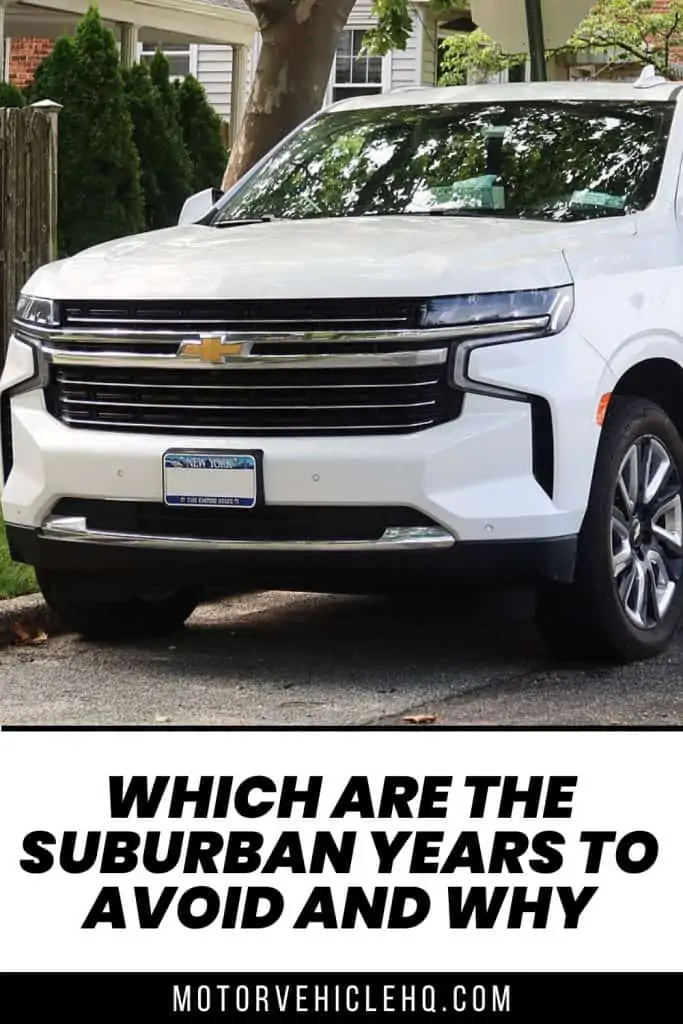
A 2021 Chevrolet Suburban LT by Kevauto / CC BY-SA 4.0

Jim Wicks is the founder of MotorVehicleHQ. With over two decades of experience in the automotive industry and a degree in Automotive Technology, Jim is a certified car expert who has worked in various roles ranging from a mechanic, car dealership manager, to a racing car driver. He has owned more than 20 cars over the past 15 years. Ask him about any vehicle you see on the road and he can tell you the make, model and year. He loves the aesthetics of all things cars, and keeps his vehicles in pristine condition.
In his free time, Jim enjoys getting his hands dirty under the hood of a classic car or taking long drives along the country roads. His favorite car? A 1967 Shelby GT500, a true classic that, according to Jim, “represents the pure essence of American muscle.”
